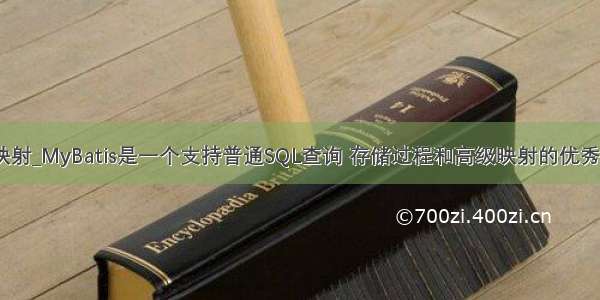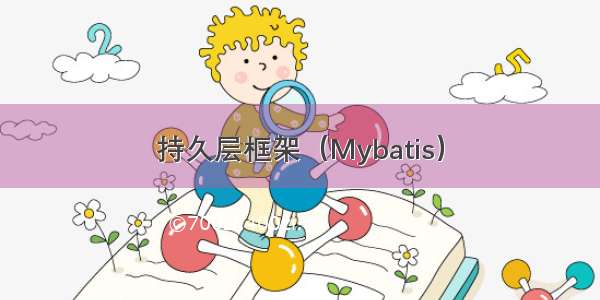
💗wei_shuo的个人主页
💫wei_shuo的学习社区
🌐Hello World !
动态SQL
动态SQL就是指根据不同条件生成不同的sql语句,本质还是SQL语句,知识可以在SQL层面,执行逻辑代码
搭建环境
创建数据库
create database mybatis;创建表
CREATE TABLE `blog`(`id` VARCHAR(50) NOT NULL COMMENT '博客id',`title` VARCHAR(100) NOT NULL COMMENT '博客标题',`author` VARCHAR(30) NOT NULL COMMENT '博客作者',`create_time` DATETIME NOT NULL COMMENT '创建时间',`views` INT(30) NOT NULL COMMENT '浏览量')ENGINE=INNODB DEFAULT CHARSET=utf8;
创建基础工程
导包
<dependencies><dependency><groupId>org.projectlombok</groupId><artifactId>lombok</artifactId><version>1.18.24</version></dependency></dependencies>编写配置文件
<?xml version="1.0" encoding="UTF-8" ?><!DOCTYPE configurationPUBLIC "-////DTD Config 3.0//EN""/dtd/mybatis-3-config.dtd"><!--configuration核心配置文件--><configuration><!-- 引入外部配置文件--><properties resource="db.properties"/><settings><!--标准日志工厂实现--><setting name="logImpl" value="STDOUT_LOGGING"/><!--开启驼峰命名自动映射--><setting name="mapUnderscoreToCamelCase" value="true"/></settings><!--实体类起别名--><typeAliases><package name="com.wei.pojo"/></typeAliases><!-- 环境配置--><environments default="development"><environment id="development"><!--事物管理--><transactionManager type="JDBC"/><dataSource type="POOLED"><property name="driver" value="${driver}"/><property name="url" value="${url}"/><property name="username" value="${username}"/><property name="password" value="${password}"/></dataSource></environment></environments><!--绑定接口--><mappers><mapper class="com.wei.dao.BlogMapper"/></mappers></configuration>编写实体类
package com.wei.pojo;import lombok.Data;import java.util.Date;@Datapublic class Blog {private int id;private String title;private String author;private Date createTime;private int views;}编写实体列Mapper接口
package com.wei.dao;import com.wei.pojo.Blog;public interface BlogMapper {//插入数据int addBlog(Blog blog);}编写实体列对应的映射文件Mapper.xml文件
<?xml version="1.0" encoding="UTF-8" ?><!DOCTYPE mapperPUBLIC "-////DTD Config 3.0//EN""/dtd/mybatis-3-mapper.dtd"><mapper namespace="com.wei.dao.BlogMapper"><insert id="addBlog" parameterType="blog">insert into mybatis.blog (id, title, author, create_time, views)VALUES (#{id}, #{title}, #{author}, #{createTime}, #{views})</insert></mapper>测试
import com.wei.dao.BlogMapper;import com.wei.pojo.Blog;import com.wei.utils.IDutils;import com.wei.utils.MybatisUtils;import org.apache.ibatis.session.SqlSession;import org.junit.Test;import java.util.Date;public class MyTest {@Testpublic void test(){SqlSession sqlSession = MybatisUtils.getSqlSession();BlogMapper mapper = sqlSession.getMapper(BlogMapper.class);Blog blog = new Blog();blog.setId(IDutils.getId());blog.setTitle("Mybatis如此简单");blog.setAuthor("kuangshen");blog.setCreateTime(new Date());blog.setViews(9999);mapper.addBlog(blog);blog.setId(IDutils.getId());blog.setTitle("Java如此简单");mapper.addBlog(blog);blog.setId(IDutils.getId());blog.setTitle("Spring如此简单");mapper.addBlog(blog);blog.setId(IDutils.getId());blog.setTitle("微服务如此简单");mapper.addBlog(blog);sqlSession.close();}}
if语句
BlogMapper接口类
//查询博客List<Blog> queryBlogIF(Map map);BlogMapper.xml映射文件
<mapper namespace="com.wei.dao.BlogMapper"><select id="queryBlogIF" parameterType="map" resultType="blog">select * from mybatis.blog where 1=1<if test="title!=null">and title=#{title}</if><if test="author!=null">and author=#{author}</if></select></mapper>MyTest测试类
@Testpublic void queryBlogIF(){SqlSession sqlSession = MybatisUtils.getSqlSession();BlogMapper mapper = sqlSession.getMapper(BlogMapper.class);HashMap hashMap = new HashMap();hashMap.put("title","Java如此简单");hashMap.put("author","kuangshen");List<Blog> blogs = mapper.queryBlogIF(hashMap);for (Blog blog : blogs) {System.out.println(blog);}sqlSession.close();}
where语句
<mapper namespace="com.wei.dao.BlogMapper"><select id="queryBlogIF" parameterType="map" resultType="blog">select * from mybatis.blog<where><if test="title!=null">and title=#{title}</if><if test="author!=null">and author=#{author}</if></where></select></mapper>
choose语句
<mapper namespace="com.wei.dao.BlogMapper"><select id="queryBlogChoose" parameterType="map" resultType="blog">select * from mybatis.blog<where><choose><when test="title!=null">title=#{title}</when><when test="author!=null">and author=#{author}</when><otherwise>and views =#{views}</otherwise></choose></where></select></mapper>
update语句
<mapper namespace="com.wei.dao.BlogMapper"><update id="updateBlog" parameterType="map">update mybatis.blog<set><if test="title!=null">title=#{title},</if><if test="author!=null">author=#{author}</if></set>where id = #{id};</update></mapper>
trim(where,set)
prefix:trim标签内sql语句加上前缀prefixOverrides:忽略通过管道分隔的文本序列,移除所有指定在prefixOverrides属性中的内容,插入prefix属性中的内容[指定去除多余的前缀内容]suffix:trim标签内sql语句加上后缀suffixOverrides:忽略通过管道分隔的文本序列,移除所有指定在suffixOverrides属性中的内容,插入suffix属性中的内容[指定去除多余的后缀内容]
<trim prefix="WHERE" prefixOverrides=",">……</trim><trim prefix="SET" suffixOverrides=",">……</trim>
SQL片段
将一些功能提出出来,方便复用,避免重复书写
使用SQL标签提取出公共的部分
<!--id:自定义id--><sql id="if-title-author"><if test="title!=null">and title=#{title}</if><if test="author!=null">and author=#{author}</if></sql>需要使用的地方使用include标签引用即可
<select id="queryBlogIF" parameterType="map" resultType="blog">select * from mybatis.blog<where><!--refid:取上面自定义的id--><include refid="if-title-author"></include></where></select>
foreach
foreach对集合进行遍历,通常构建在IN条件的时候
select * from mybatis.blog where 1=1 and (id=1 or id=2 or id=3);
BlogMapper接口类
//查询第1,2,3号记录的博客List<Blog> queryBlogForeach(Map map);BlogMapper.xml映射文件
<!--select * from mybatis.blog where 1=1 and (id=1 or id=2 or id=3);传递map,map可以存在一个集合--><select id="queryBlogForeach" parameterType="map" resultType="blog">select * from mybatis.blog<where><foreach collection="ids" item="id" open="and (" separator="or" close=")">id=#{id}</foreach></where></select>测试类
@Testpublic void queryBlogForeach(){SqlSession sqlSession = MybatisUtils.getSqlSession();BlogMapper mapper = sqlSession.getMapper(BlogMapper.class);HashMap map = new HashMap();ArrayList<Integer> ids = new ArrayList<>();ids.add(1);ids.add(2);map.put("ids",ids);List<Blog> blogs = mapper.queryBlogForeach(map);for (Blog blog : blogs) {System.out.println(blog);}sqlSession.close();}
Mybatis缓存
Mybatis包含非常强大的查询缓存特性,它可以非常方便地定制和配置缓存,缓存可以极大的查询效率Mybatis系统中默认定义了两极缓存:一级缓存/二级缓存
缓存失效情况:
查询不同数据增删改操作,改变原来数据,必定刷新缓存查询不同Mapper.xml手动清理缓存
一级缓存(默认开启)
一级缓存也称为本地缓存
与数据库同一次会话期间查询到的数据会放到本地缓存中以后如果需要获取相同的数据,直接从缓存中拿,不需要查询数据库
User类
@Data@AllArgsConstructor@NoArgsConstructorpublic class User {private int id;private String name;private String pwd;}UserMapper接口类
public interface UserMapper {//根据ID查询用户User queryUsersByID(@Param("id") int id);//更新用户int updateUser(User user);}UserMapper.xml映射文件
<mapper namespace="com.wei.dao.UserMapper"><!--实体类起别名:<typeAliases><package name="com.wei.pojo"/></typeAliases>--><select id="queryUsersByID" parameterType="_int" resultType="user">select * from mybatis.user where id=#{id};</select><update id="updateUser" parameterType="user">update mybatis.user set name=#{name},pwd=#{pwd} where id=#{id};</update></mapper>MyTest测试类
@Testpublic void test(){SqlSession sqlSession = MybatisUtils.getSqlSession();UserMapper mapper = sqlSession.getMapper(UserMapper.class);User user = mapper.queryUsersByID(1);System.out.println(user);//更新数据mapper.updateUser(new User(2,"aaa","bbb"));//手动清理缓存sqlSession.clearCache();System.out.println("===============================");User user1 = mapper.queryUsersByID(1);System.out.println(user1);System.out.println(user==user1);sqlSession.close();}
二级缓存
二级缓存也称为全局缓存
解决一级缓存作用域低的问题基于namespace级别的缓存,一个命名空间对应一个二级缓存
默认情况下,只启用了本地的会话缓存,它仅仅对一个会话中的数据进行缓存。 要启用全局的二级缓存,只需要在你的 SQL 映射文件中添加一行
<cache/>
eviction:清除策略flushInterval:刷新间隔属性,可以被设置为任意的正整数,设置的值应该是一个以毫秒为单位的合理时间量。 默认情况是不设置,也就是没有刷新间隔,缓存仅仅会在调用语句时刷新size:引用数目属性,可以被设置为任意正整数,要注意欲缓存对象的大小和运行环境中可用的内存资源。默认值是 1024readOnly:只读属性,可以被设置为 true 或 false。只读的缓存会给所有调用者返回缓存对象的相同实例。 因此这些对象不能被修改。这就提供了可观的性能提升。而可读写的缓存会(通过序列化)返回缓存对象的拷贝。 速度上会慢一些,但是更安全,因此默认值是 false
二级缓存工作机制:
一个会话查询一条数据,这条数据会被放在当前会话的一级缓存中如果当前会话关闭,这个会话对应的以及缓存就没有了;但需求是,会话关闭,一级缓存中的数据保存到二级缓存中新的会话查询信息,就可以从二级缓存中获取内容不同的mapper查出的数据会放在自己对应的缓存(map)
开启全局缓存
<settings><!--显示开启全局缓存--><setting name="cacheEnabled" value="true"/></settings>Mapper.xml中使用二级缓存
useCache=“true” 表示会将本条语句的结果进行开启二级缓存
useCache=“false” 示会将本条语句的结果进行关闭二级缓存
<!--在当前Mapper.xml中使用二级缓存--><cache eviction="FIFO" flushInterval="60000" size="512" readOnly="true"/><select id="queryUsersByID" parameterType="_int" resultType="user" useCache="true">select * from mybatis.user where id=#{id};</select>MyTest测试类
@Testpublic void test(){SqlSession sqlSession = MybatisUtils.getSqlSession();SqlSession sqlSession2 = MybatisUtils.getSqlSession();UserMapper mapper = sqlSession.getMapper(UserMapper.class);User user = mapper.queryUsersByID(1);System.out.println(user);sqlSession.close();UserMapper mapper2 = sqlSession2.getMapper(UserMapper.class);User user2 = mapper2.queryUsersByID(1);System.out.println(user2);sqlSession2.close();System.out.println(user == user2);}总结:
开启二级缓存,同Mapper下有效所有数据存放在一级缓存中会话提交、关闭的时候,才会提交到二级缓存中
缓存原理
缓存顺序(
二级缓存——一级缓存——数据库)第一次查询,首先查看二级缓存是否存在数据然后查询以及缓存中是否存在数据最后查询数据库
自定义缓存-ehcache
EhCache 是一个纯Java的进程内缓存框架,具有快速、精干等特点,是Hibernate中默认的CacheProvider,主要面向通用缓存
导包
<dependency><groupId>org.mybatis.caches</groupId><artifactId>mybatis-ehcache</artifactId><version>1.2.2</version></dependency>resoures资源包下创建ehcache.xml
<?xml version="1.0" encoding="UTF-8"?><ehcache xmlns:xsi="/2001/XMLSchema-instance"xsi:noNamespaceSchemaLocation="/ehcache.xsd"updateCheck="false"><diskStore path="./tmpdir/Tmp_EhCache"/><defaultCacheeternal="false"maxElementsInMemory="10000"overflowToDisk="false"diskPersistent="false"timeToIdleSeconds="1800"timeToLiveSeconds="259200"memoryStoreEvictionPolicy="LRU"/><cachename="cloud_user"eternal="false"maxElementsInMemory="5000"overflowToDisk="false"diskPersistent="false"timeToIdleSeconds="1800"timeToLiveSeconds="1800"memoryStoreEvictionPolicy="LRU"/></ehcache>UserMapper.xml开启缓存
<!--在当前Mapper.xml中使用缓存--><cache type="org.mybatis.caches.ehcache.EhcacheCache"/>创建自定义缓存MyCache类
package com.wei.pojo;import org.apache.ibatis.cache.Cache;public class MyCache implements Cache {@Overridepublic String getId() {return null;}@Overridepublic void putObject(Object o, Object o1) {}@Overridepublic Object getObject(Object o) {return null;}@Overridepublic Object removeObject(Object o) {return null;}@Overridepublic void clear() {}@Overridepublic int getSize() {return 0;}}
🌼 结语:创作不易,如果觉得博主的文章赏心悦目,还请——
点赞👍收藏⭐️评论📝冲冲冲🤞
















